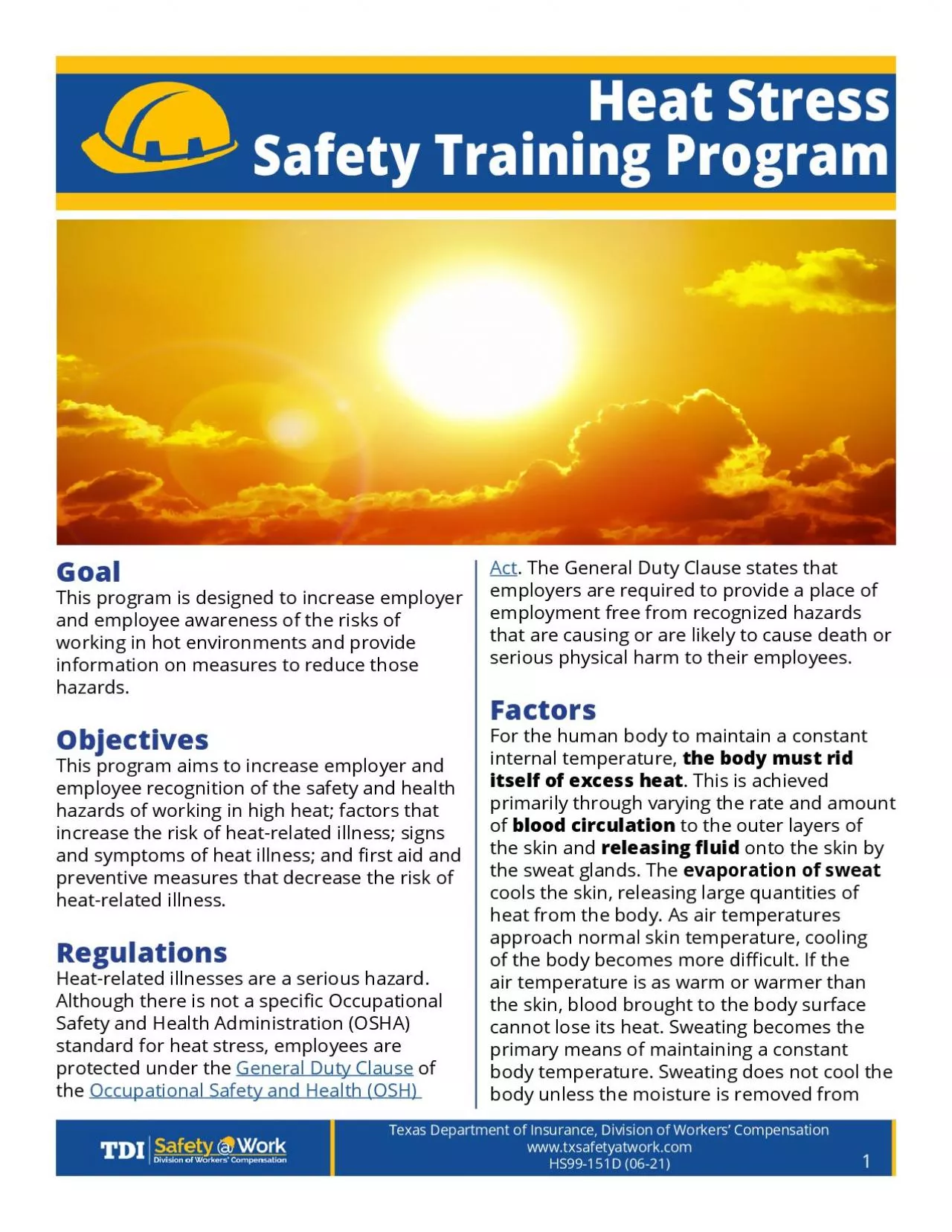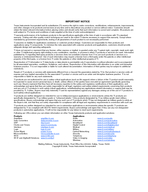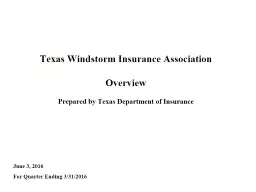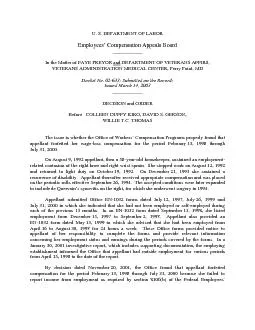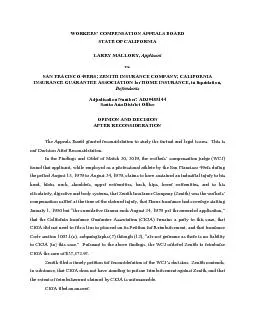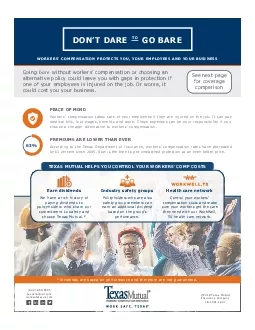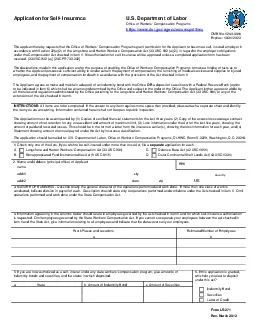PDF-Texas Department of Insurance Division of Workers146 Compensation
Author : dora | Published Date : 2022-10-13
Heat Stress Safety Training Program 1 GoalThis program is designed to increase employer and employee awareness of the risks of working in hot environments and provide
Presentation Embed Code
Download Presentation
Download Presentation The PPT/PDF document "Texas Department of Insurance Division o..." is the property of its rightful owner. Permission is granted to download and print the materials on this website for personal, non-commercial use only, and to display it on your personal computer provided you do not modify the materials and that you retain all copyright notices contained in the materials. By downloading content from our website, you accept the terms of this agreement.
Texas Department of Insurance Division of Workers146 Compensation: Transcript
Download Rules Of Document
"Texas Department of Insurance Division of Workers146 Compensation"The content belongs to its owner. You may download and print it for personal use, without modification, and keep all copyright notices. By downloading, you agree to these terms.
Related Documents

